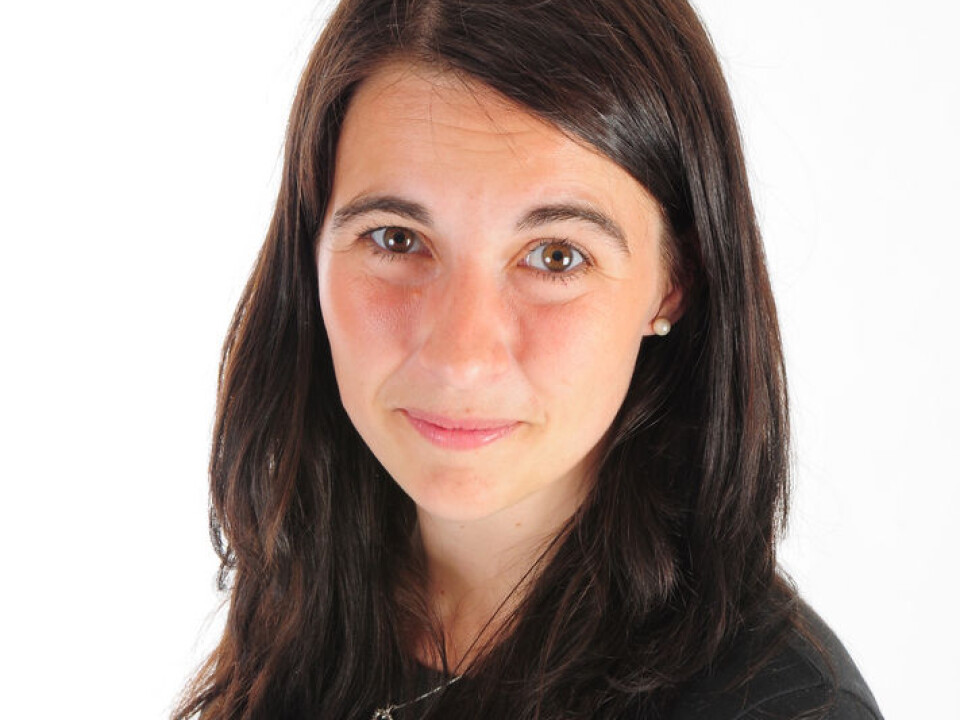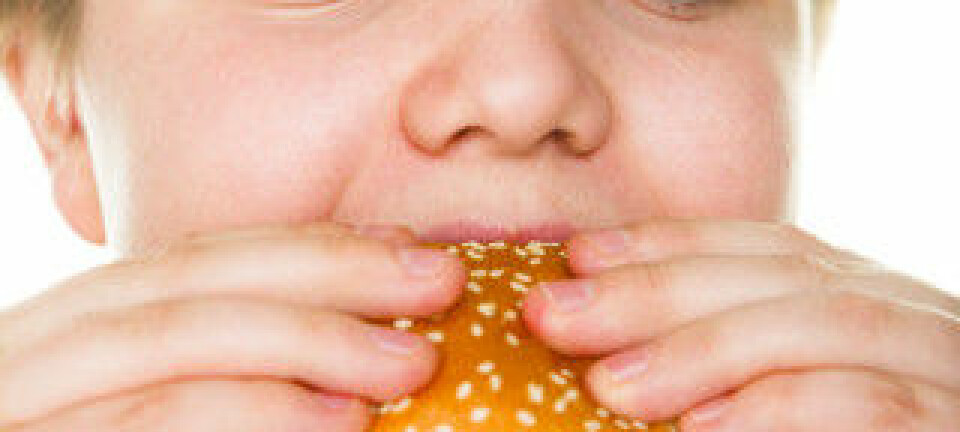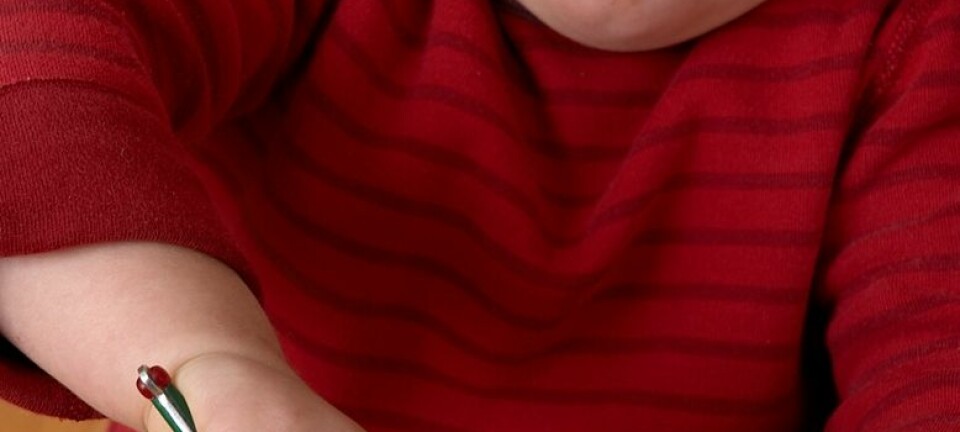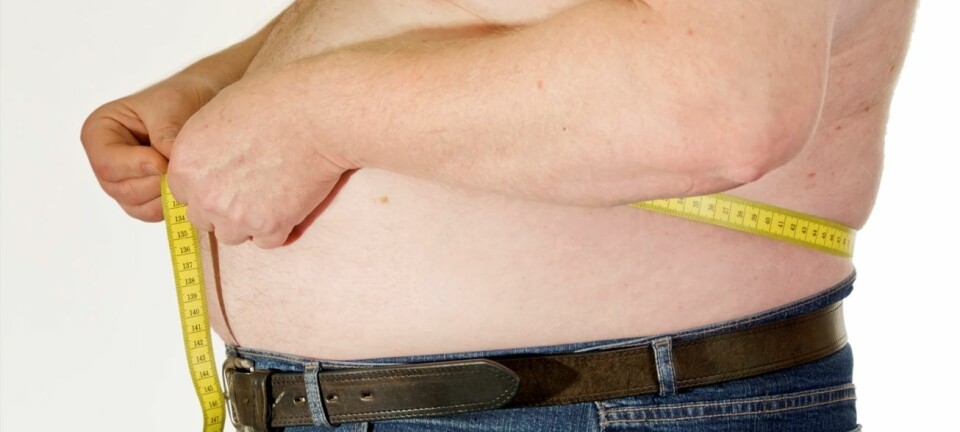
Screens add to chubby children's woes
Obese or overweight children must be prevented from spending too much time lazing in front of TVs and PCs. Behavioural therapy for the whole family could help.
Denne artikkelen er over ti år gammel og kan inneholde utdatert informasjon.
Overweight children eat more fatty and hi-cal food and get less exercise than their peers with a normal weight. They also spend more time using screen media like TVs, PCs and tablets.
This is made evident in a doctoral dissertation by research fellow Yngvild Sørebø Danielsen at the University of Bergen’s Department of Psychosocial Science. The dissertation establishes a stronger link between obesity and frequent use of the screen-based media than between diet and the degree of physical activity.
Blood samples revealed that the fat kids had too much cholesterol, elevated blood sugar levels and higher insulin values. And longer screen time correlated strongly to these blood test factors.
Activity and healthy diet are still alpha and omega
Danielsen points out that physical activity and diet haven’t suddenly become any less essential to establishing good health and fighting overweight and obesity.

“It’s still really important to establish beneficial routines with meals, healthy diets and plenty of physical activity.”
A natural consequence of increased screen time is more time sitting still and perhaps some poor eating habits as well.
Both children and adults are more apt to eat unhealthy food when sitting in front of the tube:
“Of course not everyone gets less active by spending a lot of time in front of screens, but the majority does, and previous studies have established a clear link between TV-viewing and snacking,” says researcher.

“We like to crunch on something tasty while sitting there."
She adds that the link between physical activity and diet would probably be even more evident had a larger number of children been studied and the average participants’ BMIs had been further above the obesity line.
“In a group of children with serious obesity, who had more trouble moving around, the link would certainly be even clearer,” says Danielsen.
“Screen time has a vital impact on health.”
Family based therapeutic approach
In her doctoral thesis Danielsen evaluated a treatment programme consisting of cognitive behavioural therapy using a family-based approach.
Families with children aged 7-13 participated in this plan, with the goal of helping each other make positive changes.
“It’s very easy for mealtime situations to get stuck on a negative track. Some of the focus has been on healthy routines for meals,” she says.
“Food must be eaten at the table, children mustn’t skip breakfast, the family eats together, consumes lots of vegetables and fibre foods and is encouraged to follow the general recommendations by Norwegian dieticians.”
Turning theory into practice
She thinks most modern parents know plenty about a good diet and eating habits. The problem is often practicing what’s been preached.
“So in treatment we work at establishing a positive interplay within the family,” says Danielsen.
The results show that most children reduced their weight after the three-month treatment and most of these managed to hold their weights down during the one-year follow-up period.
As a bonus the children’s self-esteem improved and symptoms of depression were reduced as the kilos disappeared.
“The hope was that some would slim down even more after the three months, but it looks like a longer treatment period is needed for that to happen.”
Stricter and healthier diet
Danielsen says it’s also important to remind people that genetics play a strong role in children’s weight problems.
“A chronic disorder can be involved, in which case fat children will have to get a more healthy diet than average in order to have a chance of losing a little weight.
“And to stand a chance of losing considerable weight and keeping it down for a long time, people probably need an even more stringent and healthier diet.”
Public health nurses
The number of overweight children has tripled since the start of the 1980s.
This has health officials worrying, largely because of the risks posed for problems such as diabetes 2 and cardiovascular diseases.
The Public Health Directorate recently published guidelines for treating obesity but Danielsen thinks the directorate needs to do more.
“There’s no comprehensive programme. The public health officials need well-evaluated treatment programmes,” says Danielsen.
She thinks more effort should be made to boost the competence of public health nurses, since they’ve been shouldered with most of the responsibility of following up the directorate’s guidelines.
“The directorate should certainly invest more in the public health nurses and refrain from constantly overloading them with new assignments.”
Reference:
Yngvild Sørebø Danielsen. Childhood overweight – characteristics and treatment. Psychological perspectives. Doctoral Dissertation, University of Bergen 2012.
---------------------------------
Read the Norwegian version of this article at forskning.no
Translated by: Glenn Ostling

































